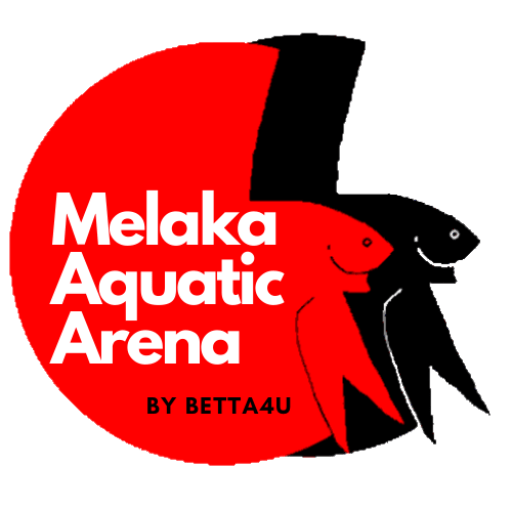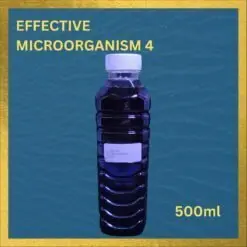Aquatic Life Care, Aqua Gardening, Aquatic Health and Diseases, MAA Blog
🌿 Simple-to-Understand Guide on How and When to Use Photosynthetic Bacteria: Dosage & Benefits for Plants and Aquariums
🌿 Simple-to-Understand Guide on How and When to Use Photosynthetic Bacteria: Dosage & Benefits for Plants and Aquariums
Photosynthetic bacteria (PSB) are microscopic powerhouses that play a pivotal role in both plant cultivation and aquarium maintenance. Their ability to convert light into energy while breaking down harmful substances makes them invaluable for enhancing plant growth and maintaining aquatic health. This guide delves into the optimal usage, timing, and dosage of PSB for plants and aquariums, ensuring you harness their full potential.
🌱 Introduction to Photosynthetic Bacteria
Photosynthetic bacteria are a group of microorganisms capable of converting light energy into chemical energy through photosynthesis. Unlike plants, they do not produce oxygen but play a crucial role in nutrient cycling and organic matter decomposition. Commonly found in aquatic environments, wetlands, and soil, these bacteria are integral to maintaining ecological balance.
🌾 Benefits of PSB for Plants
Enhancing Nutrient Availability
PSB facilitate the breakdown of organic matter, releasing essential nutrients like nitrogen and phosphorus into the soil. This process improves nutrient uptake by plants, leading to robust growth and higher yields.
Improving Soil Structure
By decomposing organic residues, PSB contribute to the formation of humus, enhancing soil structure and water retention. This creates a conducive environment for root development and microbial diversity.
Promoting Plant Growth
Certain strains of PSB produce plant growth-promoting substances such as indole-3-acetic acid (IAA), which stimulate root elongation and branching. This results in healthier plants with improved resistance to stress factors.
🐠 Benefits of PSB for Aquariums
Water Purification
PSB play a vital role in breaking down harmful compounds like ammonia, nitrites, and hydrogen sulfide in aquarium water. This purification process ensures a safe and stable environment for aquatic life.
Enhancing Fish Health
By maintaining optimal water quality, PSB reduce stress on fish, lowering the risk of diseases and promoting overall well-being. Their presence also supports the growth of beneficial microorganisms that outcompete pathogenic species.
Supporting Aquatic Plants
In planted aquariums, PSB contribute to nutrient cycling, making essential elements more available to aquatic plants. This fosters lush plant growth and a balanced ecosystem.
🕒 Optimal Timing for PSB Application
For Plants
Seedling Stage: Introducing PSB during germination can enhance root development and early growth.
Transplanting: Applying PSB at this stage helps plants establish quickly in new soil.
Flowering and Fruiting: Regular applications support nutrient demands during these critical phases.
For Aquariums
Initial Setup: Adding PSB during tank cycling accelerates the establishment of beneficial microbial communities.
Post-Cleaning: Reintroducing PSB after water changes or filter maintenance helps restore microbial balance.
Regular Maintenance: Periodic dosing maintains water quality and supports ongoing biological filtration.
📏 Dosage Guidelines for Plants
Soil Application: Mix 20 ml of PSB solution per liter of water and apply to the soil around the plant base every two weeks.
Foliar Spray: Dilute 10 ml of PSB in a liter of water and spray directly onto leaves during early morning or late afternoon.
Hydroponic Systems: Add PSB at a concentration of 1 ml per liter of nutrient solution, replenishing weekly.
📐 Dosage Guidelines for Aquariums
Initial Dose: For new setups, add 10 ml of PSB per 100 liters of water.
Maintenance Dose: Apply 5 ml per 100 liters weekly to sustain microbial populations.
After Water Changes: Reintroduce PSB at 10 ml per 100 liters to compensate for microbial loss.
⚠️ Common Mistakes to Avoid
Overdosing: Excessive PSB can lead to imbalances and oxygen depletion.
Incompatible Additives: Avoid combining PSB with bactericidal treatments that may kill beneficial microbes.
Improper Storage: Store PSB in a cool, dark place to maintain viability.
🔗 Integrating PSB with Other Practices
With Fertilizers: PSB can enhance the efficiency of organic fertilizers by accelerating nutrient release.
In Filtration Systems: Incorporating PSB into biofilters boosts their effectiveness in waste breakdown.
Combined with Probiotics: Using PSB alongside other beneficial microbes can create a synergistic effect, improving overall system health.
📊 Real-world Case Studies
Agricultural Success
Farmers incorporating PSB into their fertilization regimes have reported increased crop yields and reduced reliance on chemical inputs, leading to more sustainable practices.
Aquaculture Improvements
Aquarium enthusiasts using PSB have observed clearer water, healthier fish, and reduced maintenance efforts, highlighting the bacteria’s role in creating balanced aquatic environments.
❓ FAQs
What are photosynthetic bacteria?
Photosynthetic bacteria are microorganisms that use light energy to convert inorganic substances into organic matter, playing a key role in nutrient cycling and environmental balance.
Can PSB be used in both freshwater and saltwater aquariums?
Yes, PSB are versatile and can thrive in various aquatic environments, making them suitable for both freshwater and marine systems.
How often should I apply PSB to my garden?
For optimal results, apply PSB every two weeks during the growing season, adjusting frequency based on plant response and environmental conditions
References:
- Photosynthetic Bacteria PSB For Aquaculture – Facebook
Photosynthetic Bacteria PSB For Aquarium – Benefits, Applications & History
Water Conditioners






